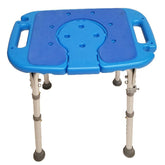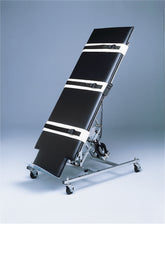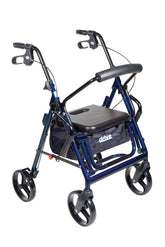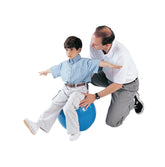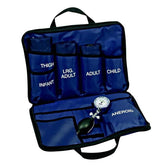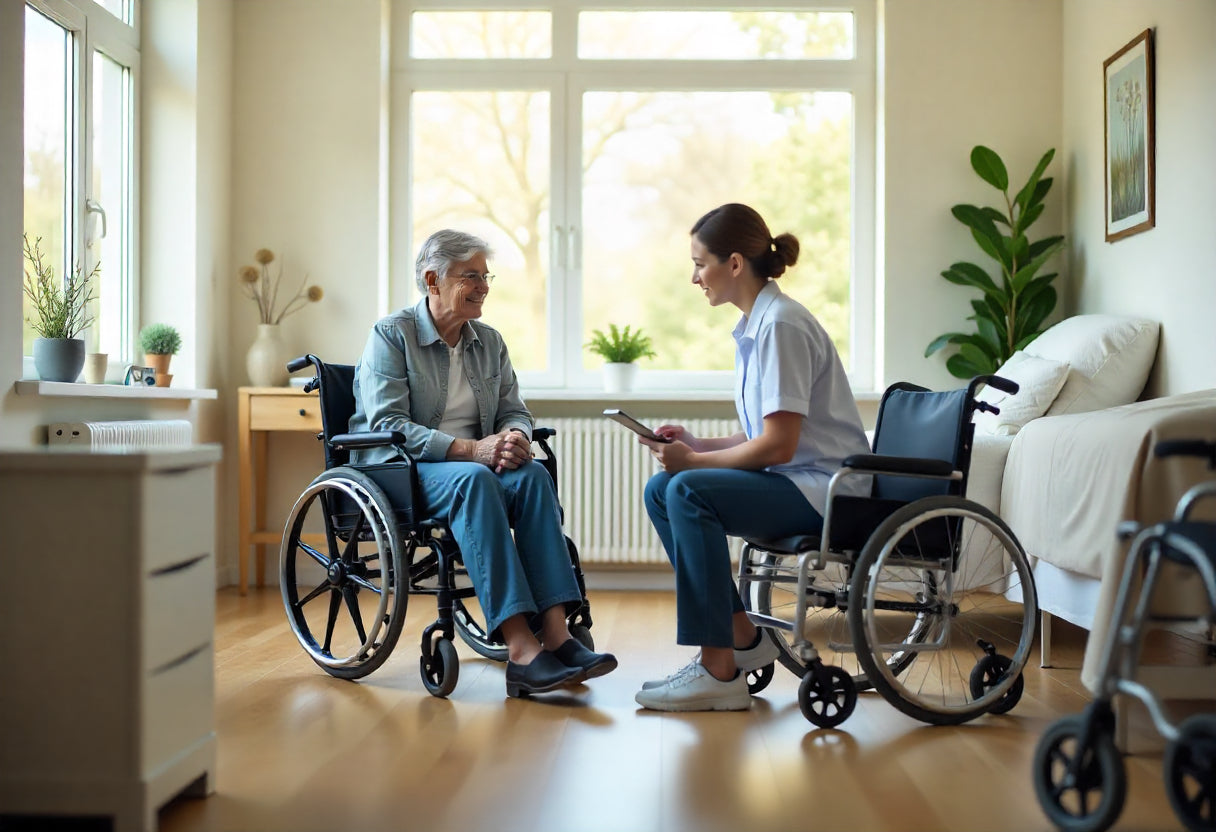
Medical Equipment for Homecare: Key Factors to Weigh Before You Rent or Buy
Discharge day is rarely the end of care, but it’s the start of a different challenge. Patients head home with a list of medications, follow-ups, and exercises. Families feel the weight of responsibility. And for those of you guiding them, nurses, therapists, or discharge planners, the equipment you recommend can make recovery smoother or turn it into a daily struggle. Reliable medical equipment for home care isn’t just another task on the checklist; it’s the bridge between hospital-level care and a safe, confident recovery at home.
Quality That Withstands Real Life
You have witnessed the consequences of the failure of the gear: a wobbly shower chair, a scooter that stops halfway along the hall. It is stressful for families and dangerous to patients. Good equipment, such as a Laguna Professional Reclining Shower Chair or a Zoomer Folding Power Chair, is constructed to sustain the wear and tear of everyday use. Recommending reliable tools will demonstrate to families that you care about them, not only being convenient.
Longevity is not the only issue of durability. It involves not getting discouraged, such as falling down, missing one therapy session, or losing confidence in a caregiver. Equipment that stands up to pressure safeguards development.
Comfort and Fit Build Confidence
The fact that a walker is excessively high or that a therapy table does not fit correctly can be counterproductive to healing. This is not a place where comfort is luxurious, but it is necessary. Portable mobility aids such as the So Lite Folding Scooter allow patients to be independent again without feeling threatened by cumbersome devices. Portable devices like a Tilt Table or a Baseline AcuAngle Inclinometer allow a home therapy session to be safer and less daunting.
Patients will be more likely to adhere to their care plans when the equipment fits well and they feel comfortable using it. And when they are constant, things get better.
Ease Matters When Stress Is High
Families already juggle medication schedules, follow-ups, and their own worries. Equipment should be the least of their concerns. A Portable First Aid Medical Kit or Baseline Sit n’ Reach Flexibility Box offers simple, reliable functionality—no complicated setups, no guesswork. The right tools free caregivers to focus on what truly matters: supporting recovery, not troubleshooting devices.
Stay Current With Advancing Technology
Home care is not what it was even five years ago. The Breather 1.1 Dyspnea Reducer is a kind of device that introduces hospital-quality respiratory care to homes. The newer-style therapy aids are more intelligent, lighter, and safer, thus allowing patients to receive high-level treatment without the barriers of the hospital walls.
Keeping up with the times not only impresses the family, but it also protects your patients. Old machinery may delay recovery or even endanger it. By suggesting current and professional-grade tools, you make sure that the care plans are up to date with medical development.
The Real Cost of Going Cheap
A bargain shower chair or walker might appear enticing on paper. But what happens when it breaks in mid-use or even fails to fit? Fall costs, emergency room, or a frustrated caregiver might very well be more expensive than the initial savings. The reason is that buying new and quality equipment will reduce the long-run costs and provide tranquility. It is a bet on security and self-respect.
Dignity and Independence Go Hand in Hand
A scooter isn’t just a scooter; it’s the freedom to get to the kitchen table without help. A shower chair is not merely a hygiene matter, but a matter of privacy and self-respect. By suggesting some trusted equipment, such as a So Lite Scooter or Laguna Shower Chair, you are regaining independence. And independence fuels motivation, which is critical for recovery.
Why Buying Outperforms Renting
Rentals may look appealing at first glance. But there’s no guarantee about where that equipment has been or how well it’s been maintained. Fit can be hit-or-miss, and options are often limited. Buying means clean, dependable gear that’s ready when families need it. No renewal deadlines. No late-night phone calls about missing parts.
For professionals, this choice also protects your credibility. Families trust your recommendations; steering them toward reliable, brand-new tools reflects your commitment to their well-being. For caregivers, ownership brings control; they can adapt schedules and routines without worrying about returns or unexpected costs.
Helping Families Make Confident Choices
Making patients and families go through equipment choices with you is more than checking boxes. You are literally and emotionally preparing them to move to the next phase of healing. Start by asking:
-
Can this equipment be used on a daily basis?
-
Is it appropriate for the size and mobility of the patient and in the home environment?
-
Will it not simplify, not complicate, the work of the caregiver?
-
Is it compliant with the current safety and functionality standards?
Referring them to known products such as high mobility aids, long-lasting therapy equipment, or trustworthy breathing devices will help them know they are not the only ones to figure this out.
Building a Safer Path Home
Recovery doesn’t end at the hospital door. A stable scooter, an accurate inclinometer, or a sturdy shower chair can mean the difference between progress and a setback. By recommending dependable, clinician-approved medical equipment for home care, you’re not just supplying gear, you’re safeguarding dignity, independence, and peace of mind.
Every family you work with is already managing enough uncertainty. Give them certainty where you can: in the quality of the tools that will carry them through. Durable, well-designed equipment does more than support recovery; it restores confidence and keeps patients moving forward, one safe step at a time.

